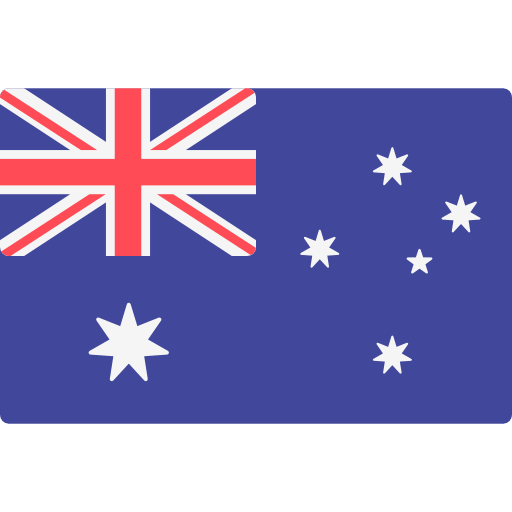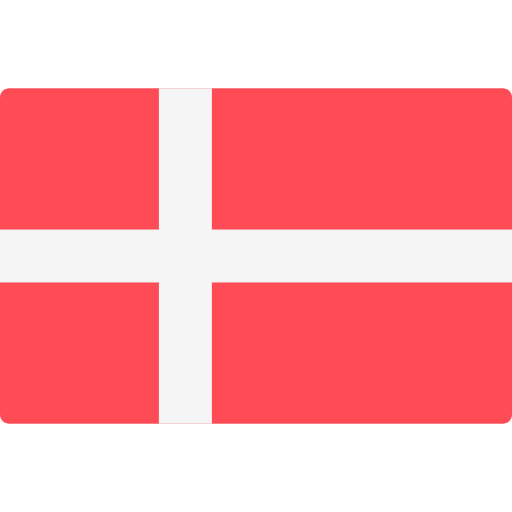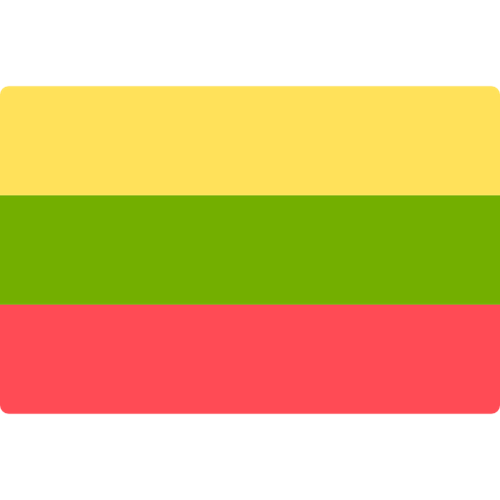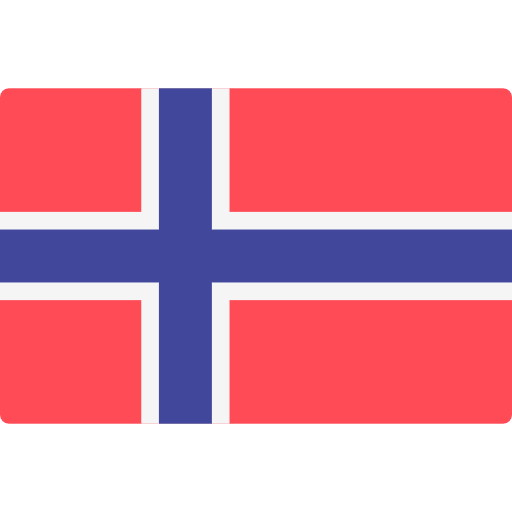Eurofins Toys & Hardlines Monthly Bulletin (October 2025)


Europe strengthens safety measures for “wave roller” ride-on toys
On 10 September 2025, the European Commission adopted Implementing Decision (EU) 2025/1785, amending Decision (EU) 2023/740 regarding harmonised standards for wave rollers, a popular type of ride-on toy.
Wave rollers are ride-on toys where the child sits and controls direction and movement with their feet, while the wheels remain within reach of the hands during use. In January 2024, Germany submitted a formal objection, arguing that the harmonised standard EN 71-1:2014+A1:2018 does not adequately address risks of crushing, cutting, trapping, or shearing of fingers and hands.
After technical analysis and consultation with experts and Member States, the Commission concluded that specific clauses of the standard do not sufficiently ensure protection against these hazards. As a result, it has decided to limit the presumption of conformity for wave rollers, excluding clauses 3.19 and 4.15.1.
The decision takes effect upon its publication in the Official Journal of the European Union. In doing so, it aims to ensure that toys marketed in the EU meet the essential safety requirements set out in Directive 2009/48/EC.
Publications on European Commission initiatives
The table below summarises recent publications from the European Commission concerning environmental and consumer-related initiatives:
| Date | Title |
|
8 September 2025 |
Toy safety – amendment to the Toy Safety Directive as regards cobalt This initiative aims to amend the Toy Safety Directive with regard to cobalt in toys. The Directive prohibits the use of carcinogenic, mutagenic, and toxic for reproduction (CMR) substances, including cobalt. This initiative proposes the use of cobalt in toys that have been assessed as safe by the scientific committee (SCHEER) by setting exemptions for specific categories of toys. The feedback period of draft act closed in September. |
ECHA’s consultation to identify substances of concern in packaging and packaging waste
On 17 September 2025, the European Chemicals Agency (ECHA) opened a public consultation to gather information supporting the development of a technical report under the new Packaging and Packaging Waste Regulation (PPWR), which has been in force since 11 February 2025.
The report aims to identify substances of concern found in packaging and packaging components and to propose follow-up measures, including potential restrictions.
ECHA is seeking data on:
- Packaging materials and their uses
- Substances used in packaging
- Manufacturing and recycling processes
- Waste management technologies
Participants may submit confidential information, which will be treated accordingly by the contracted parties. Although the study focuses on the EU single market, non-EU stakeholders may also contribute if they hold relevant information. The deadline for submission is 28 October 2025.
For more information, please refer to the ECHA’s website here.
EU to terminate Timber Trade Agreement with Liberia
On 9 September 2025, the European Commission published a proposal to formally terminate the Voluntary Partnership Agreement (VPA) with Liberia, originally signed in 2011 and in force since December 2013. The agreement aimed to ensure that all timber exported from Liberia to the EU was legally sourced through the implementation of the FLEGT licensing system.
Despite multiple revisions and extensions to the implementation timeline, the FLEGT licensing system has never been launched. After more than a decade of limited progress, the Commission has concluded that it is unrealistic to expect the system to become operational before 2026.
Meanwhile, the new EU Deforestation Regulation (Regulation 2023/1115) requires more effective measures to combat illegal logging and deforestation, rendering the VPA with Liberia outdated.
The EU remains committed to exploring new forms of cooperation with Liberia that better align with current sustainability and zero-deforestation goals. It will pursue official termination of the VPA through written notification, as permitted under Article 29 of the agreement, to preserve the credibility of EU trade instruments and strengthen alignment with modern environmental policies.
For more information, please refer to the official proposal in the European Commission website here.
European publication related to waste
The table below provides a summary of recent European notifications and publications related to waste and packaging:
| Date | Reference | Title |
|
28 August 2025 |
Regulation of the Minister for Climate and the Environment on specific rates of product fees for individual products Fee rates for specific products and fishing gear containing plastic, related to achieving collection, recovery and recycling targets. The new regulation on fee rates implements the statutory authorisation on the obligations of entrepreneurs as regards the management of certain types of waste and on product fees. It is a continuation on specific rates of product fees for individual products. Fee rates for fishing gear containing plastic have been added thereto. |
|
|
29 August 2025 |
Compost Ordinance – KompV 2025 The ordinance regulates the end-of-waste disposal of composts and quality requirements for composts and compost soils. |
|
|
16 September 2025 |
Government Bill to Parliament proposing an amendment to the Waste Act and related legislation The purpose of the proposal is to introduce supplementary provisions to the EU Regulation on batteries and waste batteries to national legislation. The proposed amendments mainly concern the Waste Act, which is applied in Åland through the Act of Åland (2018:83) on the application of the Finnish Waste Act. The proposal currently being presented is the last part of the implementation of the Batteries Regulation. |
|
|
16 September 2025 |
Government Bill to Parliament proposing an amendment to the Waste Act and related legislation The proposal puts forward amendments to the extended producer responsibility under Article 8(2) and (3) of Directive (EU) 2019/904 on the reduction of the impact of certain plastic products on the environment. It proposes that the compensation paid by producers to municipalities for the costs referred to in the aforementioned paragraphs would be based on a fixed annual cost per capita, with the exception of collection containers for tobacco waste, the costs of which should be reimbursed in accordance with the actual costs incurred. |
New technical guide on cork materials
On 1 September 2025, the European Directorate for the Quality of Medicines & HealthCare (EDQM) released a new guide titled:
The guide includes:
- Scientific and regulatory recommendations for the safe use of cork in products such as bottle stoppers, trays, placemats, and fruit bowls.
- A list of evaluated substances used in cork manufacturing.
- Replaces the 2007 Council of Europe policy statement on cork materials.
- Supplements Resolution CM/Res(2020)9 on the safety and quality of food contact materials.
EU proposal to restrict microplastics notified to WTO
On 17 September 2025, the European Commission notified the World Trade Organization under reference G/TBT/N/EU/1157.
The aim of this proposal is to protect the environment by restricting the use of microplastics that may be released into it, amending Entry 78 of Annex XVII of the REACH Regulation.
It will apply to products containing intentionally added microplastics, defined as particles smaller than 5 mm, made of or coated with solid synthetic organic polymers that are insoluble and non-biodegradable.
The consultation is open until 16 November 2025.
France expands list of products eligible for EU Ecolabel Certification
On 5 September 2025, the Ministry of Ecological Transition issued a new ministerial order updating the list of products eligible for European Union Ecolabel certification under an accreditation programme.
This new decree, dated 2 September 2025 and published in the Journal Official, repeals the previous order from 6 March 2025, significantly expanding the scope of included products.
The 24 product groups now eligible for Ecolabel certification are:
- Cosmetic products
- Pet care products
- Textile detergents
- Hand dishwashing detergents
- Dishwasher detergents
- Detergents for industrial or institutional dishwashers
- Textile detergents for industrial or institutional use
- Hard surface cleaning products
- Culture media and soil improvers
- Absorbent sanitary protection products
- Reusable menstrual cups
- Interior and exterior paints and varnishes
- Tissue paper and tissue products
- Graphic paper
- Printed paper products, stationery products, and paper bags
- Tourist accommodation
- Interior cleaning services
- Textiles
- Footwear
- Lubricants
- Mattresses
- Furniture products
- Hard floor coverings
- Wood, cork, and bamboo floor coverings
This measure aims to strengthen France’s environmental commitment and help consumers identify products with lower ecological impact, in line with Regulation (EC) No. 66/2010 of the European Parliament. The order takes effect the day after its publication, 6 September 2025.
Cancellation of notice relating to the scope of products and construction materials
On 6 September 2025, the Journal Officiel published an official notice (NOR: TECP2524336V) revoking the previous notice concerning the scope of Extended Producer Responsibility (EPR) for construction products and materials in the building sector.
This new notice cancels the one published on 5 December 2024 (NOR: TECP2432933V), which was scheduled to take effect on 1 January 2026, and replaces the earlier notice from 17 June 2023 (NOR: TREP2315866V). Consequently, the scope of the EPR system for construction products and materials in the building sector remains defined by the notice of 17 June 2023 (NOR: TREP2315866V).
The notice is published in the Official Bulletin of the Ministry of Ecological Transition, Biodiversity, Forests, the Sea and Fisheries.
France incentivises use of recycled plastics with new bonuses for producers
On 7 September 2025, the French government published a new decree (NOR : TECP2506054A) establishing adjustments to the financial contributions paid by producers when incorporating recycled plastic materials. This measure, effective 1 January 2026, aims to promote the circular economy and reduce the environmental impact of plastic waste.
The decree applies to producers of:
- Household packaging
- Printed paper and paper for graphic use
- Contents and containers of chemical products that may pose a significant risk to the environment
- Furniture
- Electrical and electronic equipment
- Sporting and leisure goods
- DIY and garden items
- Toys
Bonuses will not be granted to products:
- With composite matrices or materials that hinder recycling
- Containing recycled PVC in certain packaging
- With recycling processes yielding less than 50% efficiency
Bonuses are only awarded if the collection, recycling and incorporation stages occur within 1,500 km of France’s geographic centre or in countries with equivalent regulations.
The ADEME will conduct an annual review of the decree’s implementation and its impacts, allowing for adjustments if necessary.
France updates environmental legislation to align with EU single-Use plastics Directive
On 7 August 2025, the French government published Decree No. 2025-775, introducing several amendments to the Environmental Code to comply with Directive (EU) 2019/904, commonly known as the SUP Directive, aimed at reducing the environmental impact of certain plastic products.
The decree establishes new definitions and obligations for producers of single-use plastic products and fishing gear containing plastic.
Key changes include:
- Precise definitions of “fishing gear,” “fishing gear waste,” and “producers,” to facilitate the implementation of extended producer responsibility.
- Specific obligations for manufacturers, importers, and sellers—both domestic and international—who market these products in France.
- Immediate entry into force, the day after its publication in the Journal Officiel.
The decree responds to a call from the European Commission regarding delays in transposing the SUP Directive, which seeks to reduce marine pollution and promote a circular economy.
This move reinforces France’s commitment to sustainability and environmental protection, particularly in sectors such as fishing and plastic consumption.
Update on Timber Trade Regulations in UK
In August 2025, the Guidance for businesses trading in timber and timber-related products, such as furniture, pulp and paper, was updated.
Following its exit from the European Union, the UK adapted the EU Timber Regulation (Regulation No. 995/2010) and Forest Law Enforcement Governance and Trade (FLEGT) into its national framework, now known as the UK Timber Regulation (UKTR) and UK FLEGT Regulations.
The regulations cover imported and domestic timber and a broad range of timber products. These regulations prohibit the placing of illegally harvested timber on the UK market and require operators to implement due diligence systems to ensure traceability and legality.
Key updates from the 2022-2025 government report include:
- Continuation of the core principles of the former EU regulation, now under UK jurisdiction.
- Application of the FLEGT licensing scheme, particularly in trade with countries such as Indonesia, which must issue FLEGT licences for timber exports to the UK.
- Obligation for traders to maintain detailed records of transactions to support traceability.
- Oversight and enforcement by the Office for Product Safety and Standards (OPSS), which conducts inspections, imposes penalties, and ensures compliance.
This update reinforces the UK’s commitment to legal forestry, sustainability, and commercial transparency, aligning with international standards despite its departure from the EU.
Illinois regulates PFAS in various consumer products
In August 2025, the state of Illinois signed House Bill 2516 into law, amending the state’s PFAS Reduction Act and significantly expanding the list of consumer goods that will be subject to PFAS restrictions.
The new law prohibits the sale, distribution, or offering for sale of certain consumer goods containing intentionally added PFAS, beginning 1 January 2032.
Covered product categories include:
- Cosmetics
- Dental floss
- Juvenile products
- Menstrual products
- Intimate apparel
The law defines PFAS as a class of fluorinated organic chemicals containing at least one fully fluorinated carbon atom.
GB 4806.10-2025 standard revisions for coatings similar material and article for food contact safety
On 25 September 2025, the China National Health Commission (NHC) announced (NHC Announcement No. 6 of 2025) that the GB 4806.10-2025 National Food Safety Standard – Coatings and Coatings for Food Contact Materials and Articles will replace the 2016 edition.
The new standard will take effect from 2 September 2026, with a transition period of one year.
Key revisions of the 2025 edition:
Table 1: Key Revisions in GB 4806.10-2025
| Standard section | Key changes | ||
| Section 1 | Scope |
Removes the previous exclusion of “paper coatings.” |
|
|
Section 2 |
Terminology and Definitions |
Expands the definition to include coatings indirectly in contact with food but with components that may transfer to food. |
|
|
Section 3 |
Basic Requirements |
Adds requirements for manufacturers (section 3.2) and users (section 3.3). |
|
|
Section 4
|
Technical Requirements
|
Section 4.1 Raw Material Requirements |
Changes “resin list” to “base raw materials”; clarifies base raw materials and additives. |
|
4.2 Sensory Requirements of coatings |
Emphasises that coatings in direct contact with food must meet sensory requirements for coatings, and unifies the wording of sensory requirements. |
||
|
Section 4.3 Physicochemical Indicators |
Specifies that overall migration, permanganate consumption, and heavy metals (Pb) only apply to coatings directly in contact with food. Harmonises footnotes on infant-specific provisions. Changes scope of high-temperature testing from “drinking vessels” to “cookware.” Adds a new indicator: total migration of aromatic primary amines. |
||
|
Section 4.4 Other Technical Requirements |
Adds requirements for auxiliary materials such as coatings, inks, adhesives, aligned with other product standards. |
||
|
Section 5
|
Others |
Section 5.1 Migration Test |
Adds special provisions for when the surface linings of metal cans are unsuitable for overall migration testing with acidic food simulants |
|
Section 5.2 |
Removes the special provisions from the original standard; now uniformly managed by GB 4806.1. |
||
| Appendix A |
/ |
Changes the term "base resin" to "base raw material," adds clauses A.2 and A.4, with a management model that is primarily polymer-based, supplemented by monomer and starting substance management. Revises the list of base raw materials in Table A.1, increasing the number of permitted base raw materials to 346 entries and adjusting some restrictive requirements. |
|
Table 2: Comparison between the 2025 edition and the 2016 standard editions
| Technical requirement |
Items |
Indicator requirement | |
| GB 4806.10-2025 | GB 4806.10-2016 | ||
| Sensory requirements for linings |
Sensory |
Smooth surface, uniform colour, no pores; after soaking, should be free of cracking, blistering, and peeling. |
|
|
Migration test solution |
The solution from the migration test should not show deterioration in sensory properties such as colouration, turbidity, precipitation, or abnormal odour. |
||
| General physicochemical indicators |
Overall migration |
≤10 mg/dm2 (≤60 mg/kg, for infants and young children. Applicable to coatings in direct contact with food) |
|
|
Potassium Permanganate consumption |
≤10 mg/kg (Only applicable to coatings in direct contact with food; test conditions for cookware coatings are "boil for 0.5h, then leave at room temperature for 24h," other coatings use "60°C, 2h") |
||
|
Heavy metals (as Pb) |
≤1 mg/kg (Only applicable to coatings in direct contact with food; test conditions for cookware linings are "boil for 0.5h, then leave at room temperature for 24h," other coatings use "60°C, 2h") |
||
|
Total migration of Primary Aromatic Amines |
Not detectable (detection limit = 0.01 mg/kg) (Only applicable to coatings containing substances that may produce primary aromatic amines, such as aromatic isocyanates and azo colourants. The migration of primary aromatic amines should be tested on the final food contact material and article after the coating has fully cured. For primary aromatic amines with specific migration limits specified in Appendix A of this standard, GB 9685, and related announcements, those limits shall be followed). |
/ | |
New standard, new challenges, new opportunities
- Broader scope: The new standard removes the exclusion for paper coatings and expands definitions to include indirect contact coatings.
- First-time whole-process risk control: Introduces explicit requirements for both manufacturers and users to minimise coating use and residues.
- Expanded base raw material list: Increases from 105 to 346 items; adopts polymer-focused management with supplementary regulation of monomers and starting substances.
- More scientific test conditions: For cookware, permanganate consumption and heavy metal testing change from “boiling 0.5 h + 24 h at room temperature” to “60°C for 2 h”.
- New indicator for aromatic primary amines: Limit introduced (not detectable). Applies to coatings that may release such substances.
- Optimised migration testing: Provides solutions for anomalous results when testing coatings on metal cans. If acid simulants cause changes (e.g., peeling, bubbling, corrosion), representative samples should be prepared on inert substrates (stainless steel, glass). If still unsuitable, 10% ethanol may be used instead of 4% acetic acid.
- Unified labelling requirements: Removes the older requirement to label both substrate and coating materials separately; labelling must now comply with GB 4806.1.
GB 4806.16-2025 silicone rubber materials and articles the new standard release
On 25 September 2025, the China National Health Commission (NHC) published the “Announcement on the Release of 32 National Food Safety Standards Including the National Food Safety Standard: Maximum Levels of Contaminants in Foods (GB 2762-2025) and Two Amendments” (NHC Announcement No. 6 of 2025).
Among these, GB 4806.16-2025 National Food Safety Standard – Food Contact Silicone Rubber Materials and Articles will replace the relevant requirements for silicone rubber materials and articles previously contained in GB 4806.11-2016.
The new standard will officially take effect on 2 September 2026, with a transition period of one year.
Key revisions in GB 4806.16-2025
Section 1. Scope
- Clarifies that it only applies to silicone rubber materials and articles.
Section 2. Terminology and Definitions
- Specifies the term “food contact silicone rubber materials and articles.”
Section 4. Technical Requirements
- Section 4.1 Raw Material Requirements:
- Defines two management dimensions – base raw materials and additives.
- Section 4.2 Sensory Requirements:
- Harmonises wording for sensory specifications.
- Section 4.3 Physicochemical Indicators:
- Harmonises footnotes on “infant-specific” provisions.
- Modifies test conditions for permanganate consumption and heavy metals (expressed as Pb).
- Adds a new item: “volatile substances.”
- Section 4.3 Other Technical Requirements:
- Adds provisions on coatings, inks, adhesives, and other auxiliary materials to align with other product standards.
Section 5.1 Migration Testing
- Aligns food simulant selection with GB 31604.1 and removes the special provisions for selecting simulants for fatty foods.
Appendix A
- Changes the term “base polymer” to “base raw material,” adds new clauses A.2 and A.3, and shifts the management model to prioritise polymer management, with monomers and starting substances as supplementary.
- Expands the base raw material list by adding two permitted materials.
Appendix B
- Adds a new Appendix B: “Determination of Volatile Substances.”
Comparison of GB 4806.11-206 and GB 4806.16-2025
The changes in silicone rubber technical requirements mainly focus on physicochemical indicators.
The differences in sensory requirements and general physicochemical indicators are summarised in the table below:
| Technical requirement |
Items |
Indicator requirement | |
| GB 4806.10-2025 | GB 4806.10-2016 | ||
| Sensory requirements |
Appearance |
Normal colour, no abnormal odour, no impurities |
Normal colour, no abnormal odour, no dirt |
|
Migration test solution |
Should not exhibit discolouration, turbidity, precipitation, or abnormal odour |
Should not show deterioration in sensory properties such as colouration, turbidity, precipitation, or abnormal odour |
|
|
General physicochemical indicators |
Overall migration |
≤10 mg/dm2 (Infants and young children ≤60 mg/kg) |
≤10 ≤10 mg/dm2 (infants and young children≤60 mg/kg) |
|
Permanganate consumption |
≤ 10 mg/kg [water, 60°C, 2 h] |
≤ 10 mg/kg [water, 60°C, 0.5 h] |
|
|
Heavy metals (as Pb) |
≤ 1 mg/kg [4% acetic acid, 60°C, 2 h] |
≤ 1 mg/kg [4% acetic acid, 60°C, 2 h] |
|
|
Volatile substances |
≤0.5 g/100g |
- |
|
Additional notes:
- The base raw material list was expanded from 19 to 21 items (newly added: silica and 1-ethynylcyclohexanol).
- The additive list was clarified; additives allowed in rubber under GB 9685-2008 were incorporated into the silicone rubber additive positive list via Amendment No. 1 to GB 9685-2016.
- Test conditions became stricter (permanganate consumption and heavy metal testing extended from 0.5 h to 2 h).
- The special provisions for fatty food simulants were deleted; vegetable oil selection now follows GB 31604.1.
- A new indicator for volatile substances was added (≤ 0.5 g/100 g).
India issues guidelines for recycled PET in food contact materials
On 23 May 2025, the Food Safety and Standards Authority of India (FSSAI) published the Guidelines for Acceptance of Recycled Polyethylene Terephthalate (PET) as Food Contact Material (FCM-rPET).
These guidelines were issued under the Food Safety and Standards (Packaging) Regulations, 2018, specifically Regulation 4(4)(e), which empowers FSSAI to prescribe criteria for recycled materials used in food applications.
Earlier, on 28 March 2025, the First Amendment to the Packaging Regulations, 2025 was notified. This amendment explicitly permitted the use of recycled PET in food contact materials, provided it complies with FSSAI’s guidelines. The regulatory shift supports India’s broader circular economy commitments, including industry targets to achieve 30% recycled content in Category-I rigid plastic packaging (including PET bottles) by FY 2025–26, as reflected in the Plastic Waste Management Rules.
Scope
The guidelines apply to post-consumer, food-grade PET recycled into resin for food contact applications (e.g., bottles, containers).
- Exclusions: rPET used in non-food applications.
- Restrictions: Only recycling processes with validated decontamination steps are allowed.
- Prohibited: Simple mechanical recycling (washing, melting, pelletising without purification) is not permitted for food-contact rPET.
Approved recycling processes
To safeguard food safety, the guidelines specify four types of recycling technologies that incorporate effective decontamination or purification:
- Super-Clean process: Conventional recycling plus enhanced cleaning (e.g., high heat, vacuum, surface treatment).
- Melt-In process: PET flakes incorporated in the molten state, with contaminant removal during melting.
- Paste-In process: Partial glycolysis/paste integration plus distillation or degassing.
- Chemical recycling: Full or partial depolymerisation to monomers, purification, and re-polymerisation.
Testing & safety validation
Recycling processes must be validated with robust safety testing in NABL or ILAC-accredited laboratories, using relevant Indian standards (IS 12252, IS 9845, IS 9833, or latest versions).
Key tests include:
- Challenge test: Simulates worst-case contamination using surrogate contaminants.
- Criterion: residual contaminants ≤ 220 µg/kg (resin-based) OR ≤ 10 µg/kg in food or food simulants (migration-based).
- Migration test: Ensures overall and specific migration limits are respected.
- Extraction test: Measures extractable substances to verify resin purity.
- Sensory test: Confirms absence of odour, taste, or sensory defects.
Process validation is mandatory upon any change in technology, feedstock, or parameters, and ongoing monitoring of inputs and outputs must be maintained.
Labelling, traceability & documentation
To ensure transparency across the supply chain:
- Marking & labelling: All rPET products must display “FCM-rPET-X” (where X is the percentage of recycled PET used), along with the statement: “The packaging material is made with recycled PET.”
- Declaration of compliance: Required from manufacturers confirming conformity with safety standards.
- Regulatory opinions: Prior approvals (e.g., NOL/NOC) from competent foreign authorities may be submitted as part of applications.
- Traceability: End-to-end supply chain records must be maintained by food business operators, converters, packers and bottlers.
- Audits & inspections: rPET manufacturers must undergo annual audits, with FSSAI reserving the right to conduct inspections and review records at any time.
Authorisation of manufacturers
- Application: rPET resin producers and recyclers must apply for authorisation through Form I, providing full process, safety, and quality documentation.
- Approval: Issued or rejected via Form II. Approvals are premises- and line-specific, and may be conditional.
- Oversight: FSSAI may request additional information, re-audit facilities, or revoke approval if non-compliance is found.
- Transparency: Since September 2025, FSSAI publishes a list of authorised rPET manufacturers and their approved technologies on its website.
India issues new quality control order for cookware & food-contact cans
India has introduced a new Quality Control Order (QCO 2025) to enforce updated national standards for cookware, utensils, and food/beverage cans. However, the government has delayed the implementation timelines to give industry more breathing room.
Please see the table below for a summary of the changes:
| Goods or articles | Indian Standard | Title of Indian Standard | Date of implementation in general (other than small and micro enterprises) | Date of implementation for small enterprises | Date of implementation for micro enterprise | ||
| Cookware, utensils and cans for foods and beverages | 14756:2024 | Stainless steel utensils | 1 October 2025 | 1 January 2026 | 1 April 2026 | ||
| 1660:2024 | Wrought aluminium utensils | ||||||
| 13983:1994 | Stainless steel sinks for domestic purposes | ||||||
| 18427:2024 | Three piece round open top metal cans for foods and beverages | ||||||
| 14407:2023 | Aluminium cans for beverages | ||||||
Below you will find a monthly summary of product recalls and alerts in Europe (Source: “Safety Gate (RAPEX)” and "European Commission Rapid Alert System for Food and Feed (RASFF)", the United Kingdom (Source: "OPSS") and the United States (Source: “CPSC”).
Safety Gate (RAPEX) (European Commission Rapid Alert System for dangerous non-food products – Alerts reported by EU national authorities).
The following 69 alerts regarding toys, childcare articles, and children's equipment products were reported between week 32 and week 35 of 2025.
|
Type of Risk |
Number of Alerts |
Notes |
|
Asphyxiation, Entrapment, Suffocation
|
1 |
Cradle The cradle exceeds the maximum permissible tilt angle/sideway angle. If a child rolls over, they may be unable to return to a supine position and their nose and mouth can be obstructed. Moreover, the distance between the crib and the frame is too small, which could lead to the child having a finger entrapped between them. Additionally, the wheels can easily unlock, which could lead to unintended move of the crib, which could cause that the child has its limbs entrapped in it. The product does not comply with the General Product Safety Regulation or EN 1130. |
|
Burns |
1 |
Toy chef’s hat The toy hat is highly flammable and the flame propagation is too high. It may catch fire if worn close to an ignition source. The product does not comply the Toy Safety Directive or EN 71-2. |
|
Burns, Fire
|
1 |
Heatable soft toy The inner bag of the soft toy overheats when warmed in a flatbed microwave without the presence of an additional glass of water during heating. The product does not comply with the Toy Safety Directive. |
|
Chemicals |
1 |
Battery-powered toy The battery compartment can easily be opened, leaving the battery accessible. A child could put it in the mouth and swallow it. The product does not comply with the Toy Safety Directive or EN 62115. |
|
1 |
Experimental toy set The rubber of the red balloons releases an excessive amount of nitrosatable substances which generate nitrosamines. A child could be exposed to them when touching or putting the product in the mouth. The design of the safety goggles is inappropriate to protect against droplets. The product does not comply with the requirements of the Toy Safety Directive, EN 71-4, or EN 71-12. |
|
|
1 |
Finger painting kit The paints contain 2-amino-methylpropanol, methanol and ethylene glycol. The chemicals may pose a health risk to young children if ingested, inhaled or absorbed through the skin. The product does not comply with the Toy Safety Directive. |
|
|
1 |
Hairclips The product has an excessive concentration of benzene. The product does not comply with REACH Regulation. |
|
|
1 |
Notebooks with pens The plastic cover of the notebook has excessive concentrations of bis(2-ethylhexyl) phthalate (DEHP) and cadmium. The product does not comply with REACH Regulation. |
|
|
6 |
Plastic doll The migration of lead and cadmium from the toy is too high. The plastic material of the doll has an excessive concentration of bis(2-ethylhexyl) phthalate (DEHP) and dibutyl phthalate (DBP). The product does not comply with REACH Regulation, the Toy Safety Directive, or EN 71-3. |
|
|
1 |
Plastic toy The plastic material of the product has an excessive concentration of bis(2-ethylhexyl) phthalate (DEHP). The product does not comply with REACH Regulation. |
|
|
3 |
Toy slime The migration of boron from the toy slime is too high. The product does not comply with the Toy Safety Directive or EN 71-3. |
|
|
Chemical, Choking
|
1 |
Bath toy The product has an excessive concentration of bis(2-ethylhexyl) phthalate (DEHP). In addition, small plastic parts (squeaking element) may easily detach from the toy. The product does not comply with the Toy Safety Directive, REACH Regulation, or EN 71-1. |
|
Choking |
2 |
Musical toy The product has small parts that can easily detach. A small child may put them in their mouth and choke. The product does not comply with the Toy Safety Directive or EN 71-1.1 |
|
1 |
Baby walker The product has small parts (metal bell) that can easily detach. A small child may put them in the mouth and choke. The product does not comply with the the Toy Safety Directive. |
|
|
1 |
Baby teether A small part (plastic ball with attached cord) can easily detach. The product does not comply with the Toy Safety Directive or EN 71-1. |
|
|
1 |
Bottle The product contains small parts that can easily detach (the sealing plug). Small children may put them in their mouth. The product does not comply with the General Product Safety Regulation. |
|
|
1 |
Eraser Due to its characteristic form, colour, appearance and size, the product may be mistaken for foodstuff. This may lead children to put it in the mouth. Moreover, small parts (plastic lids) can easily detach. The product does not comply with the General Product Safety Regulation. |
|
|
1 |
Fidget toy The product contains small parts. The product does not comply with the Toy Safety Directive. |
|
|
1 |
Fabric toy book The product has a protruding part (red plastic attachment handle). The product does not comply with the Toy Safety Directive or EN 71-1. |
|
|
1 |
Felt-tip pens The product contains removable parts (the nibs of the pens) that can easily detach. The product does not comply with the Toy Safety Directive or EN 71-3. |
|
|
1 |
Notebook with pen Due to their improper size and ventilation air flow, the cap and the tip of the pen can obstruct the respiratory airways if swallowed. The product does not comply with the General Product Safety Regulation or ISO 11540. |
|
|
1 |
Keyring The fibrous stuffing material of the toy is easily accessible. The product does not comply with the Toy Safety Directive or EN 71-1. |
|
|
1 |
Plastic interactive toy The product has small parts (plastic "ears" made of rubber-like material) which can easily detach. The product does not comply with the Toy Safety Directive or EN 71-1. |
|
|
4 |
Plastic toy The toy contains small parts that can be easily detached. The product does not comply with the Toy Safety Directive or EN 71-1. |
|
|
1 |
Soother holder The beads of the soother holder do not have the required ventilation holes and can be loosened. Furthermore, the garment fastener of the soother holder is protruding. The product does not comply with the General Product Safety Regulation, EN 12586, or EN 71-1. |
|
|
1 |
Puzzle toy Small parts (the puzzle pieces) can easily detach. The product does not comply with the Toy Safety Directive. |
|
|
1 |
Playmat The product has small parts that can easily detach. The product does not comply with the Toy Safety Directive or EN 71-1. |
|
|
1 |
Wooden toy truck Small parts can easily detach from the toy. The product does not comply with the Toy Safety Directive or EN 71-1. |
|
|
9 |
Soft toy Small parts can detach easily. The product does not comply with the Toy Safety Directive or EN 71-1. |
|
|
1 |
Stress ball toy The product has small parts that can easily detach. The product does not comply with the Toy Safety Directive or EN 71-1. |
|
|
1 |
Toy gun set The product has small parts that can easily detach. The product does not comply with the Toy Safety Directive nor with EN 71-1. |
|
|
2 |
Toy rattle The rattle has a protruding part. The product does not comply with the Toy Safety Directive or EN 71-1. |
|
|
Choking, Damage to hearing
|
1 |
Toy whistle set The whistle is a small part. A small child may put it in the mouth and choke. Moreover, the sound pressure level produced by the toy is too high. This could lead to permanent or partial hearing loss. The product does not comply with the requirements of the Toy Safety Directive nor with EN 71-1. |
|
Choking, Damage to sight, Injuries
|
2 |
Plastic toy set The suction cup of the projectiles can easily detach. In addition, a projectile can hit a child's eye. The product does not comply with the Toy Safety Directive or EN 71-1. |
|
Choking, Suffocation
|
1 |
Soother The ventilation holes and the projection of the knob of the pacifier are too small, making it difficult to grab hold of the pacifier if stuck in a child's throat. Moreover, the plastic parts of the product may easily break, creating small parts. The product does not comply with the General Product Safety Regulation or EN 1400. |
|
Choking, Strangulation
|
1 |
Soft toy The electrical cables are easily accessible because the compartment is only protected with a Velcro fastener. These cables may form a loop large enough for a small child to wrap the wires around its neck. Additionally, the fibrous stuffing material of the toy is also easily accessible for the same reason. The product does not comply with the Toy Safety Directive or EN 71-1. |
|
Cuts |
1 |
Radio-controlled toy car The product contains sharp edges and parts that may be accessible to the user. The product does not comply with the Toy Safety Directive. |
|
Entrapment, Injuries |
1 |
Tricycle The mechanical strength of the tricycle is inadequate, and it may dismantle during use. There are accessible gaps between moving parts of the tricycle. A child's leg may become trapped there. The product does not comply with the Toy Safety Directive or EN 71-1. |
|
Entrapment, Suffocation |
1 |
Cradle The cradle's swinging motion is excessive, which can cause a child to roll over and become unable to return to a supine position. Additionally, the distance between the frame and body of the crib is too small. The product does not comply with the General Product Safety Regulation or EN 1130. |
|
Environment
|
2 |
Soft toy The solders in the product have an excessive concentration of lead and cadmium. The product does not comply with the Directive on the restriction of the use of certain hazardous substances in electrical and electronic equipment (RoHS 2 Directive). |
|
1 |
Children digital camera The solders in the product have an excessive concentration of lead. The product does not comply with the Directive on the restriction of the use of certain hazardous substances in electrical and electronic equipment (RoHS 2 Directive).
|
|
|
Injuries |
1 |
Magnetic toy The toy contains small magnets with a high magnetic flux. The product does not comply with the Toy Safety Directive or EN 71-1. |
|
1 |
Children's mask The product has an eye shield which can easily detach. Once the shield is detached, two protruding posts and screws are present at or very close to the user’s eye level. These screws could contact the eyes or soft skin area during us. The product does not comply with the Toy Safety Directive. |
|
|
1 |
Toy pushchair The pushchair is not sufficiently resistant to load. As a consequence, it can easily collapse, and a child may fall. The product does not comply with the requirements of the Toy Safety Directive nor with EN 71-1. |
|
|
Strangulation
|
1 |
Yoyo puffer ball The toy can stretch too long. A child could swing the toy around the head and twist it around the neck. The product does not comply with the Toy Safety Directive or EN 71-1. |
|
1 |
Sensory toy set The wooden rainbow ring component of the toy set features a long ribbon. This ribbon can become wrapped around a baby's neck during various activities. The product does not comply with the Toy Safety Directive or EN 71-1. |
|
|
1 |
Soft toy The product has long functional cords with free ends. These cords can become trapped during various activities of a child. The product does not comply with the Toy Safety Directive or EN 71-1. |
The following 8 alerts regarding jewellery were reported between week 32 and week 35 of 2025.
|
Type of Risk |
Number of alerts |
Notes |
|
Chemical |
1 |
Earrings set The product has an excessive concentration of Cadmium. The product does not comply with REACH Regulation. |
|
1 |
Jewellery set The rate of nickel release is too high. The product does not comply with REACH Regulation. |
|
|
5 |
Necklace The product has an excessive concentration of Cadmium. The product does not comply with REACH Regulation. |
|
|
1 |
Ring The product has an excessive concentration of Cadmium. The product does not comply with REACH Regulation. |
The following 2 alerts regarding furniture were reported between week 32 and week 35 of 2025.
|
Type of Risk |
Number of alerts |
Notes |
|
Chemical, Environment |
1 |
Doormat The plastic in the mat has an excessive concentration of short-chain chlorinated paraffins (SCCPs). The product does not comply with the Persistent Organic Pollutants (POP) Regulation. |
|
Electric shock |
1 |
Mirror with LED lights The socket built into the mirror cabinet is designed in such a way that a German safety plug can be inserted part way. The product does not comply with the requirements of the Low Voltage Directive. |
The following 13 alerts regarding miscellaneous consumer products were reported between week 32 and week 35 of 2025.
|
Type of Risk |
Number of alerts |
Notes |
|
Chemical |
1 |
Children's boxing gloves The plastic material in the product has an excessive concentration of bis(2-ethylhexyl) phthalate (DEHP). The product does not comply with REACH Regulation. |
|
1 |
Waterproof bag The plastic material in the product has an excessive concentration of bis(2-ethylhexyl) phthalate (DEHP). The product does not comply with REACH Regulation. |
|
|
1 |
Foldable bucket The plastic material in the product has an excessive concentration of bis(2-ethylhexyl) phthalate (DEHP). The product does not comply with REACH Regulation. |
|
|
1 |
Screwdriver The plastic material in the product has an excessive concentration of bis(2-ethylhexyl) phthalate (DEHP). The product does not comply with the REACH Regulation or EN 62321. |
|
|
Cuts |
3 |
Mixing-bowl lid Due to the design of the product, a whole hand can reach into the mixing bowl and touch the rotating blade. Therefore, the user can suffer cuts in the fingers or in the hand. The product does not comply with the General Product Safety Regulation or EN 60335-2-14. |
|
Environment
|
2 |
Flashlight The solders in the product have an excessive concentration of lead. The product does not comply with the requirements of the Directive on the restriction of the use of certain hazardous substances in electrical and electronic equipment (RoHS 2 Directive). |
|
Health risk / other
|
1 |
Sponges for intimate care The product is lacking instructions on the safe use of this product. The product may cause toxic shock syndrome (TSS), which is caused by toxins from the Staphylococcus aureus bacterium, which is present on or in the human body, if inserted in the body for several hours. The product does not comply with the General Product Safety Regulation. |
|
Injuries |
1 |
Children's bicycle The handlebar can easily break due to its low mechanical strength. The child can therefore lose control of the bicycle and fall. The product does not comply with the General Product Safety Regulation or EN 8098. |
|
1 |
Basketball hoop If the red crank handle used to adjust height is removed during use or handling of the product, the post may fall vertically. The product does not comply with the General Product Safety Regulation. |
|
|
1 |
Telescopic ladder The product does not comply with the General Product Safety Regulation. The product does not comply with the General Product Safety Regulation. |
RASFF (European Commission Rapid Alert System for Food and Feed - Alerts reported by EU national authorities)
The following 3 alerts regarding food contact materials related to children's tableware were reported from 21 August 2025 to 20 September 2025.
|
Product |
Notes |
|
|
Plates |
Melamine above MRL |
|
|
Plates |
Migration of formaldehyde and melamine |
|
|
tableware sets |
Migration of melamine |
|
Office for Product Safety Standards (OPSS) issues Product Safety Alerts for the U.K. market.
The following 13 alerts regarding toys, childcare articles and children's equipment products were reported between week 32 and week 35 of 2025.
|
Type of Risk |
Number of alerts |
Notes |
|
Asphyxiation |
1 |
Baby play pens/dens An infant could get their head stuck in the netted hoop supplied. If a child is left in the playpen unattended, they may gain access to the hoop and become trapped, restricting air flow. Improvements are also required to product labelling, marking and instructions. The product does not meet the requirements of the Toys (Safety) Regulations 2011. |
|
1 |
Fancy dress accessories (non-powered) The plastic bag packaging supplied does not meet minimum thickness requirements. If a child places the plastic bag over their head, they could asphyxiate. The product does not meet the requirements of the Toys (Safety) Regulations 2011. |
|
|
Chemicals |
1 |
Fancy dress accessories (non-powered) It contains methanol, ethylene glycol, and 2-amino-2-methylpropanol. The product does not meet the requirements of the Toys (Safety) Regulations 2011 and the REACH Enforcement Regulations 2008. |
|
1 |
Glitter slime It was found to contain of migratable boron, which exceeds the maximum permissible concentration. The product does not meet the requirements of the Toys (Safety) Regulations 2011. |
|
|
Choking |
1 |
Baby walker A small metal bell was included among various components. Additionally, parts of the plastic had rough edges and noticeable burrs. Some of the required documentation and markings were not present. The product does not meet the requirements of the Toys (Safety) Regulations 2011. |
|
2 |
Dolls/soft toys (non-powered) The small plastic eyes may detach and form a small part. The products do not meet the requirements of the Toys (Safety) Regulations 2011. |
|
|
1 |
Books The products present a risk of choking as the small plastic eyes may detach and form a small part. The products do not meet the requirements of the Toys (Safety) Regulations 2011. |
|
|
1 |
Fancy dress accessories (non-powered) The teethers are small parts and fit into a small parts cylinder. Some of the required documentation/markings are not present. The product does not meet the requirements of the Toys (Safety) Regulations 2011. |
|
|
Injuries |
1 |
Baby cots / cot beds / bassinet It can overturn with minimal force and may not be sufficiently strong to hold the baby’s weight. If the parent or caregiver were to rock the cot, it may tip, causing the baby to fall. The instructions were deemed inadequate and some of the required documentation/markings were not present. The product does not meet the requirements of the General Product Safety Regulations 2005. |
|
1 |
Baby sleep hammock It is possible for the wall plug to come loose during use, leading to the infant user falling from the suspended sleep product. The product does not meet the requirements of the General Product Safety Regulations 2005. |
|
|
1 |
Baby car/booster seats Under extreme temperature conditions, the plastic buckle may become deformed. This could compromise the performance of the buckle in the event of an accident. The products do not meet the requirements of the General Product Safety Regulations 2005. |
|
|
Strangulation |
1 |
Swings The flexible fabric of the swing can form loops during use. A child’s head or neck may become entangled, restricting the airflow and leading to strangulation. The products do not meet the requirements of the Toys (Safety) Regulations 2011. |
The following 2 alerts regarding furniture were reported between week 32 and week 35 of 2025.
|
Type of Risk |
Number of alerts |
Notes |
|
Entrapment |
1 |
Garden chairs It is not accompanied with any safety warnings or instructions for use. No weight limit is stated, which means it may be used incorrectly or overloaded. If the locking mechanism is not securely engaged, the chair my collapse during use. The product does not meet the requirements of the General Product Safety Regulations 2005. |
|
Strangulation |
1 |
Horizontal window blinds the chain tidy can detach from the frame due to the poor performance of the adhesive pads. This may lead to the fixed tension system failing and the cord becoming slack. If a young child were to access the cord, they could become entangled in it and restrict their airways. The product does not meet the requirements of the General Product Safety Regulations 2005. |
The following 1 alert regarding jewellery were reported between week 32 and week 35 of 2025.
|
Type of Risk |
Number of alerts |
Notes |
|
Chemicals |
1 |
Necklaces/necklets/bracelets/earrings The cadmium content was found to be greater than the maximum permissible limit. The product does not meet the requirements of the REACH Enforcement Regulations 2008. |
The following 4 alerts regarding miscellaneous consumer products were reported between week 32 and week 35 of 2025.
|
Type of Risk |
Number of alerts |
Notes |
|
Burns |
1 |
Hob pots/pans/woks/cocottes There is a fault with the handle welding. This may cause the handle to weaken over time and detach during use. The product does not meet the requirements of the General Product Safety Regulations 2005. |
|
Fire |
1 |
Bicycle parts – lighting A defect in the battery cells. Defective batteries may overheat, leading to thermal runaway and the product catching fire. The product does not meet the requirements of the General Product Safety Regulations 2005. |
|
Fire and injuries.
|
1 |
Mirror Products present a low risk of injuries as the wall hanging adhesive may fail. While the adhesion is sufficient to pass required load testing, it may result in failures over time. The product does not meet the requirements of the General Product Safety Regulations 2005. |
|
1 |
Ladders (non-powered) The steps are insufficiently strong to hold the weight of the user. The step could fail when in use. Additionally, there is no mechanism to prevent accidental closure in use, and some of the required documentation and markings are not present. The product does not meet the requirements of the General Product Safety Regulations 2005. |
Note: On 10 July 2025, the UK’s Office for Product Safety and Standards (OPSS) published its annual report on the Product Safety Database (PSD), revealing that between April 2024 and March 2025, 1,418 notifications were issued concerning 1,792 products deemed unsafe or non-compliant.
From 28 August 2025 to 25 September 2025, the CPSC (Consumer Product Safety Commission) published the following recalls:
4 recalls regarding toys and childcare products
|
Hazard |
Number of alerts |
Notes |
|
Deadly choking |
1 |
Cactus ball toy The recalled toy is intended for children under three years of age and contains small parts, which violates the small parts ban, posing a deadly choking hazard. |
|
Suffocation and Fall |
2 |
Baby loungers The baby loungers violate the mandatory standard for Infant Sleep Products because the sides are shorter than the minimum side height limit to secure the infant; the sleeping pad’s thickness exceeds the maximum limit, posing a suffocation hazard; and an infant could fall out of an enclosed opening at the foot of the lounger or become entrapped. The portable loungers do not have a stand, posing a fall hazard. These violations create an unsafe sleeping environment for infants, posing a risk of serious injury or death. |
|
Ingestion |
1 |
Crib toys The recalled toys violate the mandatory standard for toys containing button batteries because the compartment that holds the batteries in the remote can be accessed without the use of a common household tool. If button cell or coin batteries are swallowed, the ingested batteries can cause serious injuries, including internal chemical burns and death. |
10 recalls of consumer products
|
Type of Risk |
Number of alerts |
Notes |
|
Ingestion |
1 |
Light-up torches and laser pointers The recalled lite-up torches contain button cell batteries in violation of the mandatory standard for toys and the recalled mini laser pointers contain button cell batteries in violation of the mandatory standard for consumer products because the button cell batteries can be accessed easily by children. Additionally, the laser pointers do not have the warnings required under Reese’s Law. When button cell or coin batteries are swallowed, the ingested batteries can cause serious injuries, internal chemical burns, and death. |
|
Serious injury or death |
1 |
Carabiners The carabiner’s automatic closing mechanism can break and prevent the gate from closing, posing a risk of serious injury or death due to falling. |
|
Crash |
1 |
Carbon wheels A defect in the wheel can compromise the wheel’s structural integrity, posing a crash hazard. |
|
Tip-over and entrapment |
2 |
Dressers The recalled dressers are unstable if they are not anchored to the wall, posing serious tip-over and entrapment hazards that can result in injuries or death to children. The dressers violate the mandatory standard required by the STURDY Act. |
|
Serious burn injury and fire |
1 |
Tabletop firepits Alcohol fuel can splash or leak out of the fire pit reservoir during use and/or ignition, causing a flash fire that can spread and create larger hotter flames that can escape the unit, presenting risk of serious burn injury from flame jetting and fire hazards. |
|
Strangulation and entanglement |
2 |
Blinds The recalled blinds have long operating cords that can cause death or serious injury to children, due to strangulation and entanglement hazards. The blinds violate the federal rule for window coverings and present a substantial product hazard. In addition, the blinds also violate labelling requirements for window coverings. |
|
Burn |
1 |
Cooling gel pads The cooling gel pads can become hot if left in the sun or a hot car, posing a burn hazard to young children. |
|
Head injury |
1 |
Children’s helmets The recalled children’s helmets violate the mandatory safety standard for bicycle helmets because the helmets do not comply with the impact attenuation, positional stability, labelling and certification requirements. The helmets can fail to protect the user in the event of a crash, posing a serious risk of injury or death due to head injury. |















































